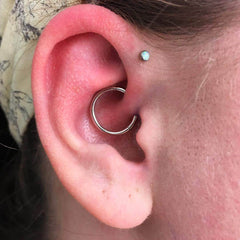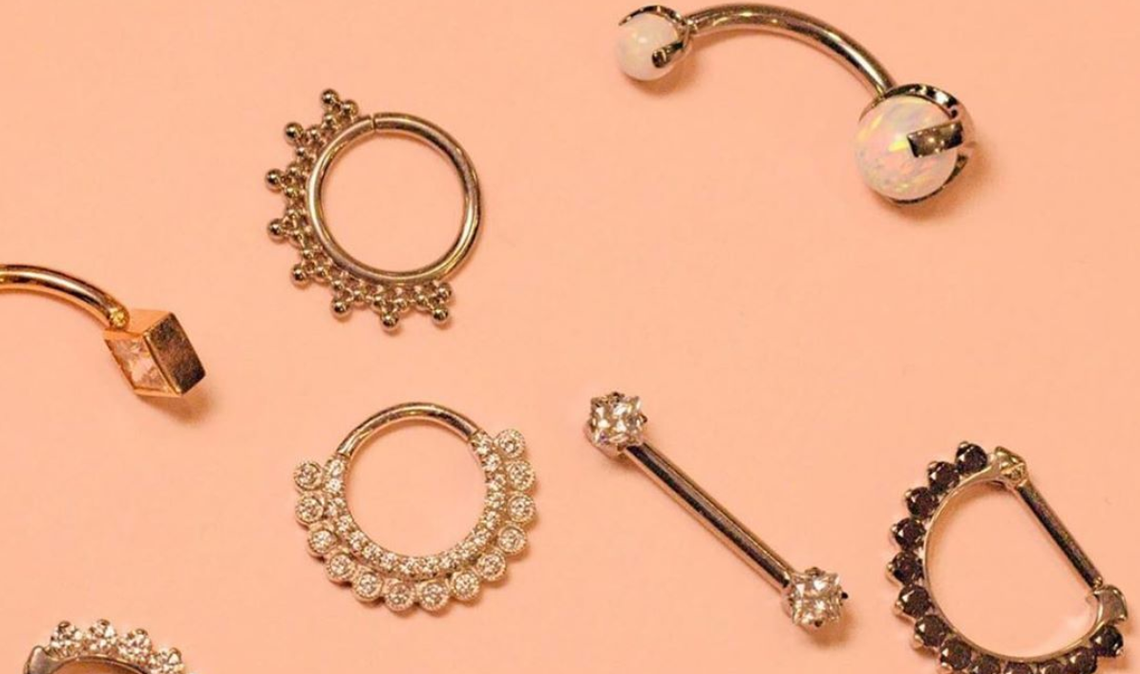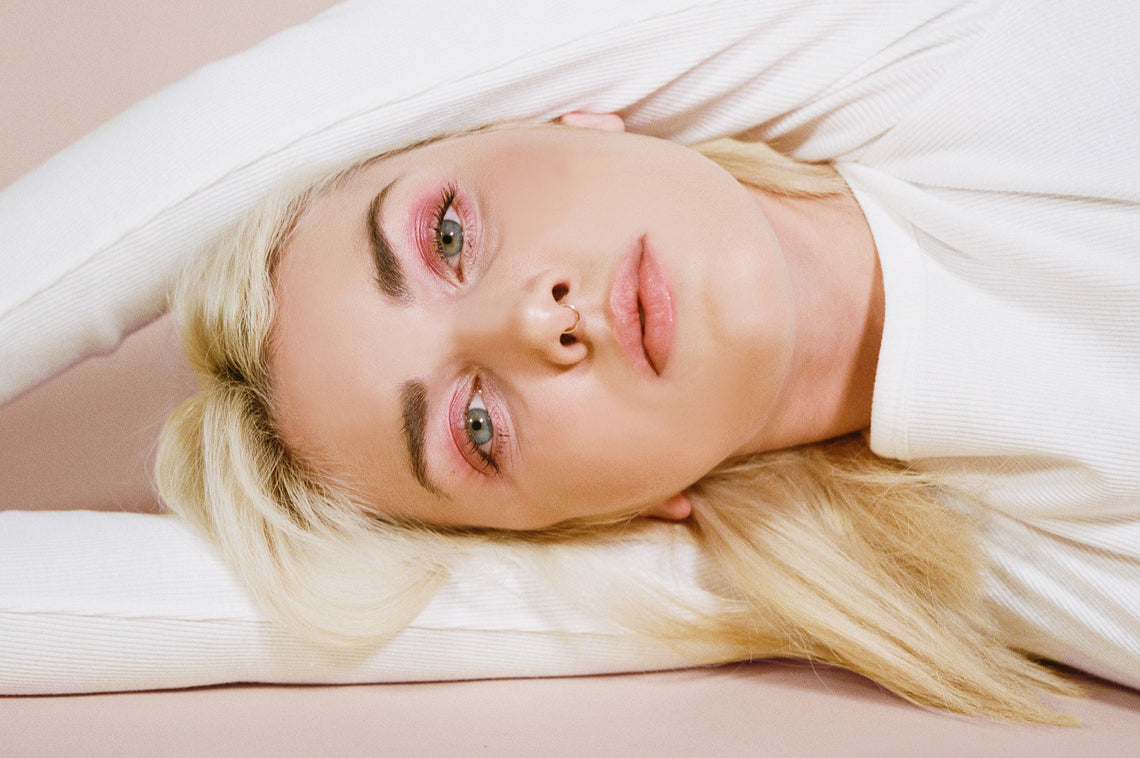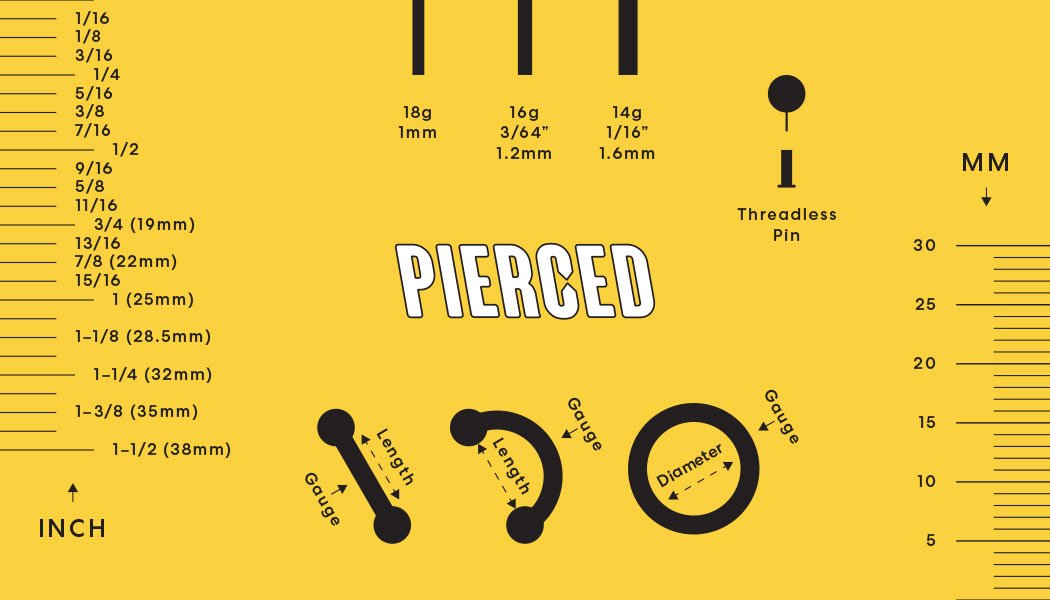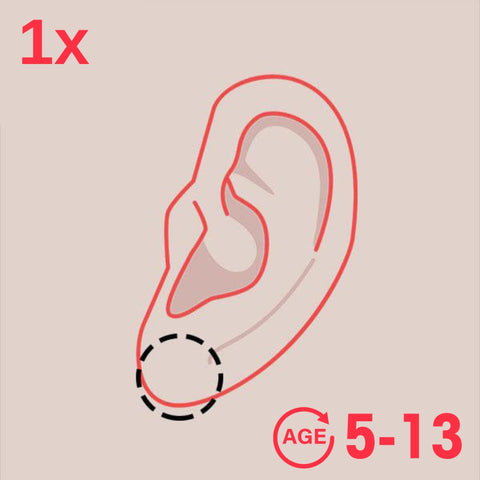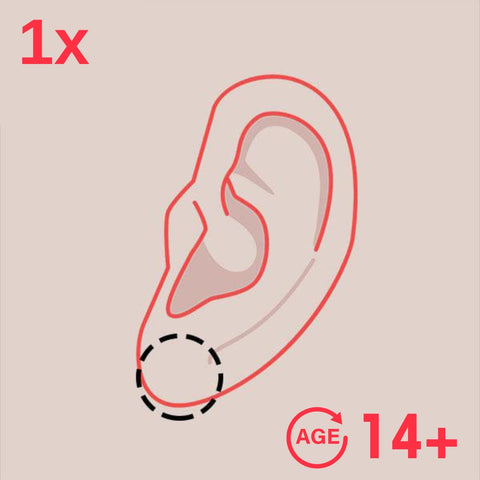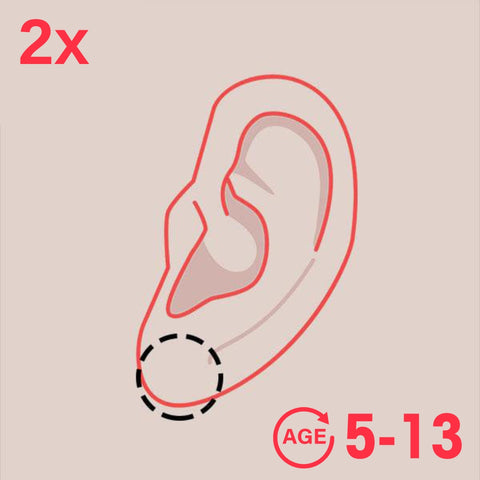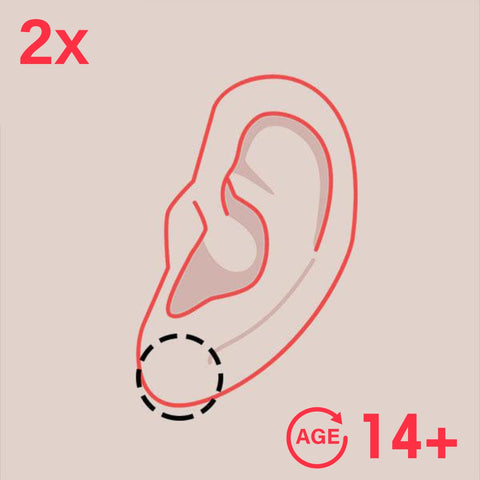Are you considering getting a nose piercing? Whether you're a piercing enthusiast or it's your first time, this comprehensive guide by Pierced will provide you with all the essential information you need to know. From the various types of nose piercings to the aftercare process, we'll cover it all, ensuring you make an informed decision and enjoy a safe and successful piercing experience.

Learn All Your Options
Nose piercings come in many different shapes and sizes. Piercing options include:
- Nostril Piercing – Nostril piercings are the most common type of piercing. You can put a subtle stud in, or you can go for a statement piece. Rings should be avoided for initial piercing and only fitted once healing has completed.
- Bridge Piercing – For this piercing, a barbell is placed in the bridge of the nose, between your eyes. The downside to a bridge piercing is that it can only be surface level. With correct anatomy and aftercare routine the bridge piercing can look stunning!
- Septum Piercing – Between the bottom of the nose and the cartilage is a place referred to as the “sweet spot”. Hoops are the most common ring choice for this area. These piercings are easy to hide and impossible for the body to reject, but it can be an inconvenience when you have a runny nose.
- Nasallang Piercing – Going through both the nostril and the septum, this piercing may look like two separate ones, but it is really a tri-nasal piercing using one piece.
- High Nostril Piercing – These are higher up than traditional nostril piercings, and it is best to just use studs in this area.
- Vertical Nose Tip Piercing – Also referred to as a “rhino piercing”, this method uses a curved barbell, where both ends of the barbell are visible.
- Septril Piercing – This is another type of piercing that uses a curved barbell.. This difficult, painful piercing inserts the piece half-vertically into the bottom of the nose at the tip. The process can take time, and this piercing is best for those with a plus sized and healed septum piercing.

Preparing for Your Nose Piercing
Research and Consultation: Before getting a nose piercing, conduct thorough research about the different types, aftercare, and potential risks. Schedule a consultation with a piercer at Pierced to discuss your preferences, anatomy, and any concerns you may have.
Choosing the Right Jewelry: Quality jewelry is vital for a successful nose piercing. Your piercer will guide you on selecting appropriate materials like implant-grade titanium, stainless steel, or 14K/18K gold. Avoid low-quality materials that may cause allergic reactions or irritations.
Health Considerations: Inform your piercer about any medical conditions or allergies you may have. They will advise you on any additional precautions or considerations to ensure a safe and comfortable piercing experience.
Common Questions about Nose Piercings
Is it going to hurt?
Arguably the most often question we hear is concern about the pain. This question is a bit subjective, as everyone has a different level of pain tolerance. The thing to keep in mind is that any piercing will hurt, but usually feel like a quick pinch and are over before you know it. It only takes seconds or less to complete the actual piercing once everything is prepped. So the initial pain from the actual puncture comes and goes in the blink of an eye. However, the area will be sore and sensitive afterwards and during healing.
What's a safe metal?
Some people are sensitive to particular jewellery metals, causing increased irritation and even mild allergic reactions at the site of the piercing.
Below we’ve listed two generally safe metals for any nose piercing:
- Surgical stainless steel – This is a cheaper metal that most people do not have an issue with. Those with sensitive skin may want to invest in titanium instead.
- Titanium – Implant grade titanium to be specific. Out of all the metal options, this one is the safest. It is a common metal used in jewellery and even those with sensitive skin can use it.
There is also a list of metals to avoid or at least approach with caution:
- Gold – Gold for initial piercing is appropriate if the piece is 14k or higher, nickel-free, and alloyed for biocompatibility. Gold higher than 18k is too soft for body jewelry. Gold plated, gold-filled, or gold overlay/vermeil jewelry is not acceptable for fresh piercings. All of these involve coating a base metal with a layer of gold. The gold surface (which is very thin- measured in millionths of an inch) can wear or chip off and be embedded in wounds.
- Nickel – Being exposed to nickel can cause rahses. Any metals/jewelry that contain nickel such as surgical steel and stainless steel.
- Silver – Silver is an allergy risk, and can tarnish easily. Black marks where the piercing is located is an effect of having silver jewelry stain the skin.


Should the right nostril or the left nostril be pierced?
Here are a few questions to ask yourself:
- What side do you part your hair towards? If you get a piercing, you don’t want to cover it up!
- Which side do you prefer to sleep on?
- Where are your other piercings located?
- If you absolutely cannot make up your mind, you can always pierce both nostrils!
Unlike other body modifications, nose piercings do not have to be permanent, so if you don’t like your piercing, try something new!

Piercing Aftercare
When it comes to nose piercings, you need to care for them properly to minimize the risk of irritation or infection.
The first step is cleaning.
We define cleaning as the physical act of cleaning our piercing, our jewelry and the surrounding skin. We do this after we clean the rest of ourselves, in the shower!
Ensure your hands are freshly washed before all aftercare!
Take a pea sized amount of soap and lather in your freshly cleaned hands. You can then gently wash the area of your new piercing, being careful not to move or twist your jewelry. You should not force soap inside the wound itself.
This will be the last step in your shower to remove any leftover residue after from your hair and body.
Remember to take great care to rinse off the soap and to dry well using gauze or paper towel, do not use cloth towels as they harbour bacteria. Leaving the piercing area wet encourages the wound to absorb extra moisture and prolong healing.
We recommend using Pursan soap (which is available in studio). If you misplace the soap, then use any Glycerin-based medical grade soap with no dyes, fragrances, or triclosan as these can damage cells and prolong healing.
NOTE: Do not use bar soaps.
The next step in our aftercare dream routine is irrigation.
Irrigation is the way we rinse off the daily crusties that form on the back and front of our new piercing. These are a normal byproduct of our bodies, but we want to avoid any build-up which can slow healing and/or cause complications.
We recommend using Neilmed Saline Spray as it’s what our piercers trust as aftercare. Another option is using an additive-free packaged saline. Avoid using home made salt mixtures as too much salt in your mixture can damage your new piercing.
Simply rinse the piercing for a few minutes then wipe away any crusties and debris with gauze or paper towel. This includes the backs of the jewelry and any settings or prongs.
Irrigation should be done at the opposite end of the day from your shower. Be sure not to remove scabbing, which you can identify by it being secured to the site of the wound and painful to remove.

Healing Time
The healing process varies greatly depending on the type of piercing you have. Here are a few healing times:
- Nostril: 4-6 months
- Septum: 3-4 months
- Rhino/vertical: 9-12 months
- Nasallang: 9-12 months
- Bridge: 4-6 months
While your piercing is healing:
- Do not use moisturizer or makeup
- Do not go swimming
- Do not play with it
- Do not take it out
- Do not overclean
- Do not change before fully healed
Issues to Watch For
Please go get any issues checked out, your trusted local piercer will be able to guide you if you have any issues with your piercing. Here are a few things to watch out for:
- Migration or Embedding – Don’t assume this means the jewellery will be pushed out. Your body may also try to absorb the metal, so keep an eye on how your piercing looks.
- Infection – Swelling, bleeding, or pus can be a sign of infection. Bumps are not infections and are caused by irritants, which is the first sign of a disruption to the healing.
These are just a few potential issues to look for. If you have any discomfort, bleeding, or unusual symptoms, go see your piercer as they are trained to know everything that could and does happen to piercings. From there they can direct you to a doctor in the rare chance you have an infection.
Enjoy Your New Look
With this comprehensive Nose Piercing 101 guide by Pierced, you are now equipped with the knowledge necessary to make an informed decision about your nose piercing. Remember to consult with professionals to ensure a safe and successful piercing experience and follow proper aftercare guidelines. Embrace the beauty of nose piercings while prioritizing your health and well-being.
Ready to take the next step? Call us today or stop by one of our piercing parlours.
Piercing Studios Near You
Mississauga
Square One Shopping Centre
100 City Centre Drive, Mississauga,
ON L5B 2C9
Phone
+1 (905) 232 -7226
Need an Experienced Piercer in Mississauga?
Working with an experienced piercer can make all the difference when it comes to your piercing experience. If you’re in the Mississauga, Ontario area and have any questions about ear piercing, body piercing or jewelry, give us a call or stop by our piercings studio today. We’d love to help walk you through what to expect and help you choose the right option.

